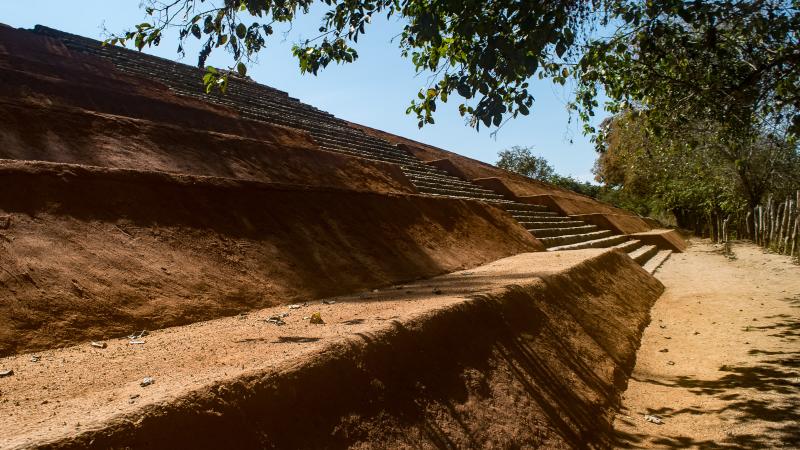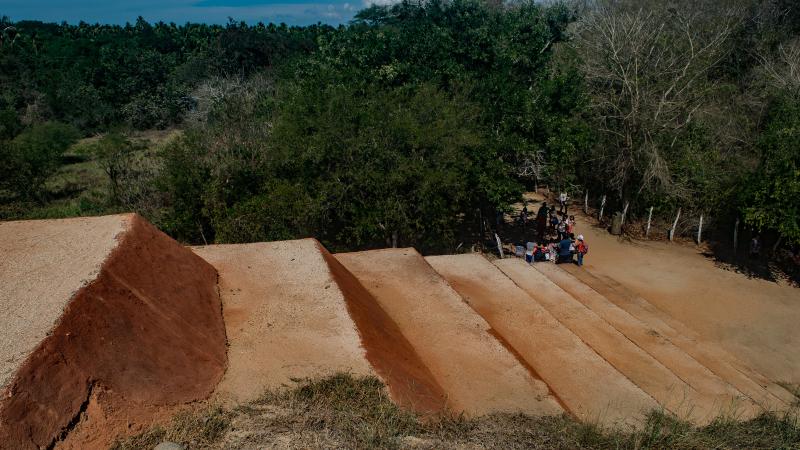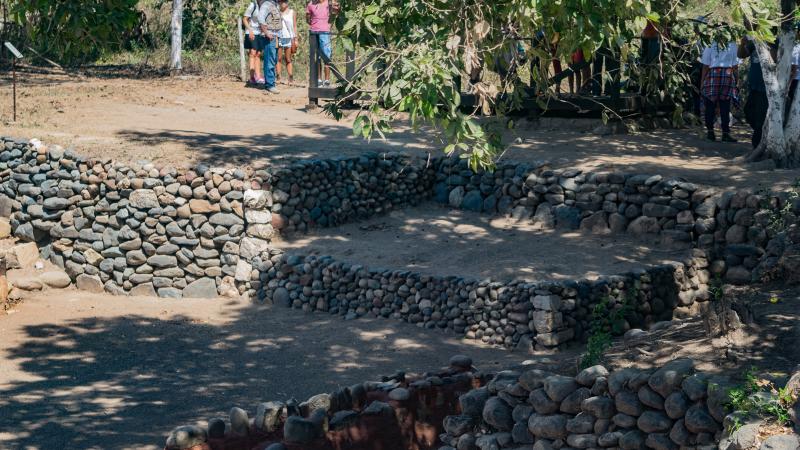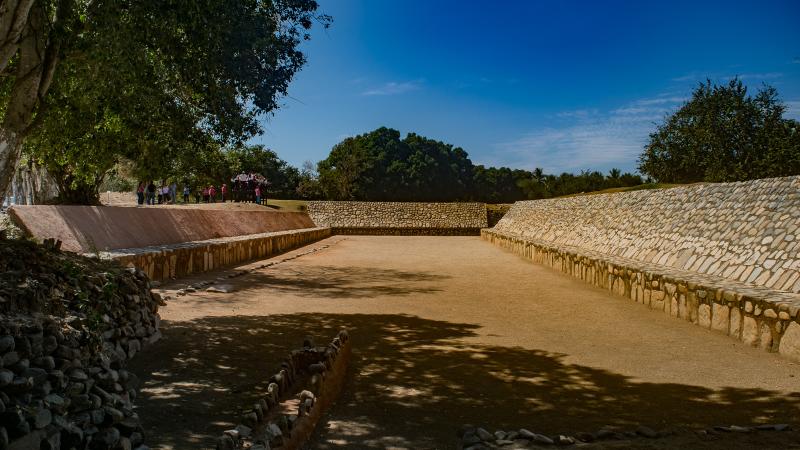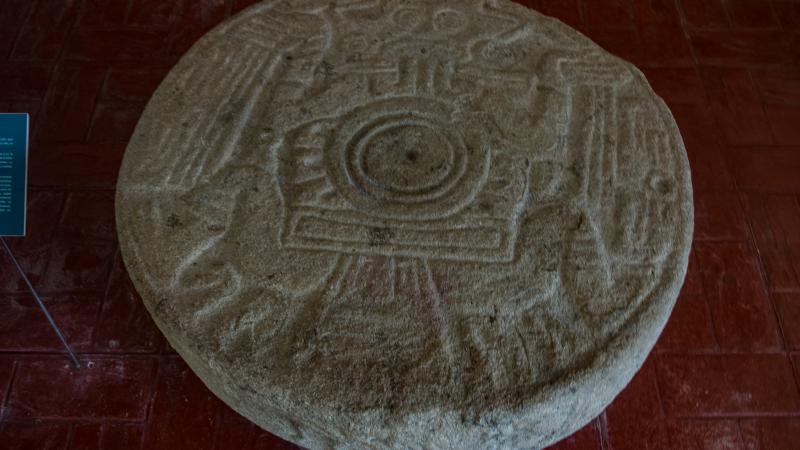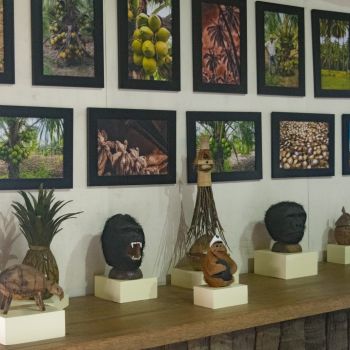Xihuacan Archaeological Zone & Site Museum
29 Hectares of land with 16 mounds, fertile soil, abundant fishing, hunting and farming seemed to be the perfect place for the entablishment of the Cuitlatecos from 1500 BC to 1350 AD, in the Classic Period, They produced cotton, corn, chile, and salt. Their architecture was built using mostly clay, mud, granite, river stones, and bricks. It was here where the first brick was made by the Cuitlatecos.
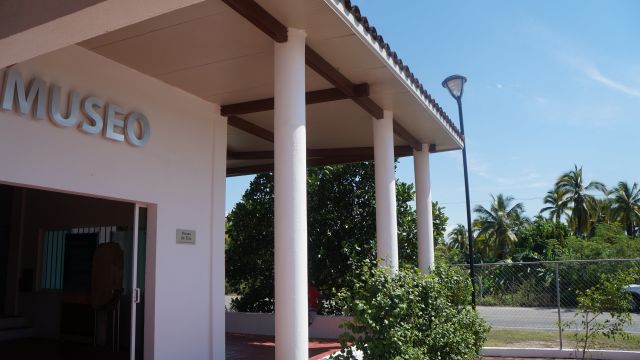
The figurines found here have Olmec characteristics;, big hips symbolizing the fertility and figurines of lords with snake headdresses inspired by Teotihuacan influences. Their deity was Xipetotec, what can be translated roughly to, "Flayed Lord."
The museum has different objects that have been found in the area and the highlight is the craved stone with the Xihuacan glyph. It is 1 meter high, 50cm wide, 25cm thick, and was found during an excavations of the Ulama court area. Xihuacan is a Nahuatl word that means “Place of the Owners of Turquoise” and makes reference to the metaphor of “The Owners of the Time” or “The Calendar Masters”
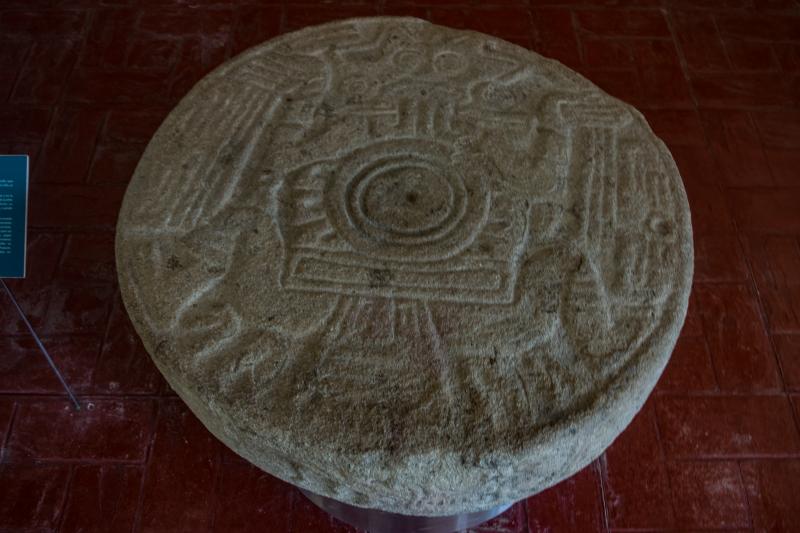
The collection presented is mostly consisting of objects found recently, but many of them where found in the primary expeditions by specialists like Pedro Hendrichs in 1943, Pedro Armillas in 1948, Ellen Brush in 1968, and Rubén Manzanilla at the end of the 1980's
Different kind of figurines, obsidian vessels, conch handcrafts, cooper axes, rattlesnake necklaces, ceramics, and lithics are used to help learn about the cultural development of this ancient city which had a very close interaction with Teotihuacan during the Classic period (200 to 650 AD)
At Xihuacan two places were discovered where the ancient game, Ulama, was practiced. One field was for fun, and the other one was for the deity Teotlachtli, what can be translated from the Nahuatl as "Lord of the Ulama". This was found north of the Ceremonial Center and it was used for important religious and astronomic events, and human sacrifices. On the south side of the court, bones and different human remains were found and after they were studied, the regional archeologists dated this Teotlachli was operating from the year 600AD to 900AD.
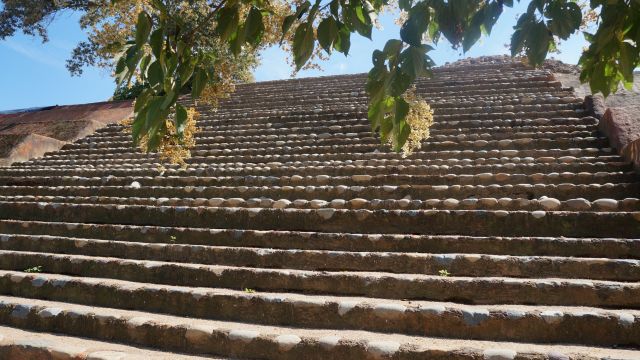
Tecpan means “The House of the Governor”. Because of the remains of a human body, and due the items founded around it, it is assumed that this was a town governor of Xihuacan.
This city of Xihuacan was destroyed once by a tsunami in the year 1350AD, but because of its ceremonial importance, the people return to celebrate New Year's every February 16th, and to start a "New Fire", an ancient tradition in the Mesoamerican cultures.
Xihuacan is located nearby La Soledad de Maciel or La Chole as it's called by the locals. This small town is aproximatelly 30 minutes far from Zihuatanejo in the Petatlán Municipality, taking the 200 Road and then 4 Kilometers of dirt road. This archeological zone is the most important in the Costa Grande, and in the state of Guerrero.
The museum hours are from 10 to 17 hr everyday.
More to see and do.
More to museums to visit
Ocio y Entretenimiento » Museos
Si tienes un negocio o quieres recomendar alguno en esta categoría, ingresalo ahora haciendo clic aquí.
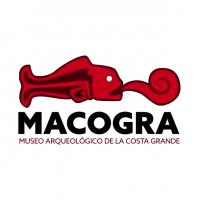
Si tienes un negocio o quieres recomendar alguno en esta categoría, ingresalo ahora haciendo clic aquí.
Acerca de zih.mx
Este sitio fue desarrollado para promover Ixtapa-Zihuatanejo y las regiones aledañas, con un enfoque en el #ConsumoLocal y el #Emprendimiento de MiPyMES. No está afiliado a organismo gubernamental ni partido político alguno.
